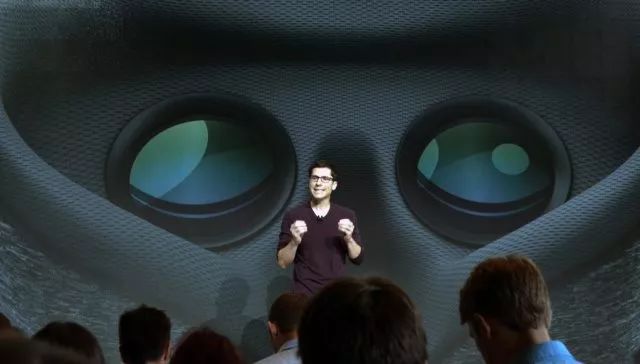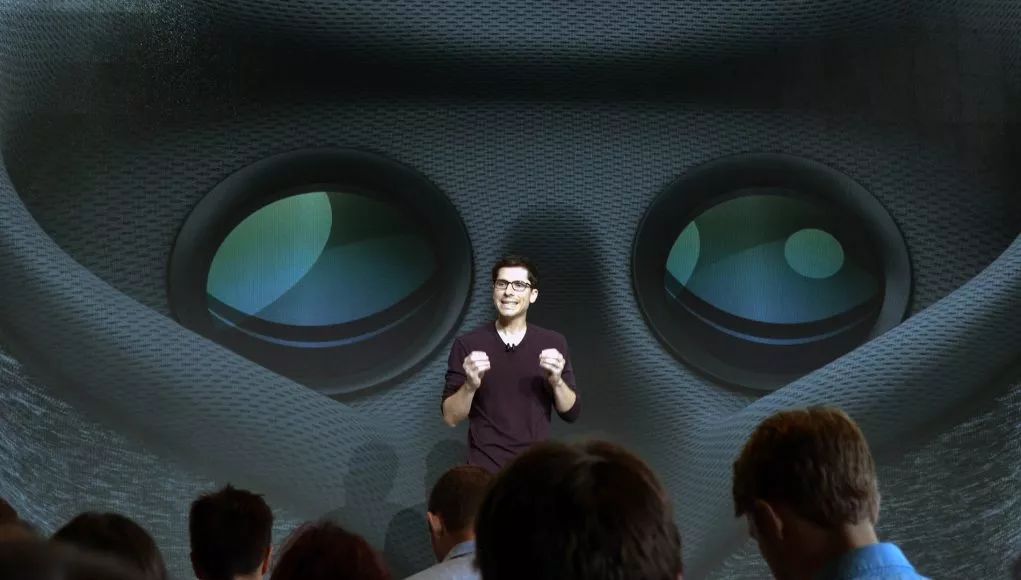谷歌将于5月份发布“全球最高分辨率OLED-on-glass显示屏”VR头显
HaloVR
谷歌在去年的信息显示协会(SID)发布会上宣布,该公司正在积极研究VR优化的OLED面板,该面板能以像素密度填充,至今为止从未见过的微型显示器之外的密度 ,所有这一切都在一个所谓的“广泛”领域的视野(FOV)。现在看来,该公司将在今年的SID上详细讨论高分辨率OLED。
通过DisplayWeek活动日程安排,Google的像素丰富的VR显示的更多细节已经揭晓:LG的工程师也将在会上与Google共同展示详细信息,可能表明LG是Google的项目合作伙伴。
“世界上最高分辨率(18万像素,1443 ppi)的OLED玻璃上显示器,被开发出来。具有彩色滤光片结构的白色OLED用于高密度像素化,并且与手机显示器相比,选择N型LTPS背板以获得更高的电子迁移率。定制的高带宽驱动器IC被制造出来。 VR和AR应用的开放驱动逻辑已经实现。“
正如OLED-info首次报道的那样,该活动日程安排的高级副本认为,Google硬件工程师Carlin Vieri将于5月22日发表演讲。
该演讲简单地被命名为“18 Mpixel 4.3-in”。用于宽视野高灵敏度头戴式显示器的1443-ppi 120-Hz OLED显示器。OLED-Info假设的这样的显示器可以在5500×3000分辨率附近出现。如果正确,它具有与目前的头显(如三星奥德赛或即将推出的HTC Vive Pro)中看到的最高分辨率面板相比,它们都具有明显的优势,两者都包含双1440×1600分辨率,90Hz时的3.5英寸AMOLED。
谷歌的AR / VR副总裁Clay Bavor去年表示,该公司“与全球领先的OLED制造商之一深入合作,创造出一种具有比现在任何商用VR显示器多10倍像素的VR显示器的OLED显示器”,正在开发的面板每台显示器将达到2000万像素 ,比上面讨论的特色显示器稍高一些,但具有相同的含义。
Bavor解释说,将这种高分辨率显示器集成到VR头戴式设备中,也会对其自身产生巨大的性能挑战,并且当前渲染配置的数据速率可能在50-100 Gb / 秒之间。结合眼动追踪的渐变渲染被认为是解决这种显示器巨大图形需求的解决方案。是的,Google也在研究foveated渲染。
我们希望能在5月份找到更多。

Google to Reveal “World’s Highest Resolution OLED-on-glass display” for VR Headsets in May
Google announced at last year’s Society for Information Display (SID) Display Week that the company was actively working on a VR-optimized OLED panel capable of packing in pixels at a density heretofore never seen outside of microdisplays – all at a supposedly ‘wide’ field of view (FOV). Now, it appears that the company is going to talk in detail about that high-resolution OLED at this year’s SID.
More details about Google’s pixel-packed VR display have come to light via the DisplayWeek event schedule: LG engineers will also be co-presenting at the session detailing the display with Google, likely indicating that LG was Google’s partner on the project.
“The world’s highest resolution (18 megapixel, 1443 ppi) OLED-on-glass display was developed. White OLED with color filter structure was used for high-density pixelization, and an n-type LTPS backplane was chosen for higher electron mobility compared to mobile phone displays. A custom high bandwidth driver IC was fabricated. Foveated driving logic for VR and AR applications was implemented.”
As first reported by OLED-info, an advanced copy of the event’s schedule maintains that a talk featuring Google hardware engineer Carlin Vieri will be taking place May 22nd.
The talk is named simply “18 Mpixel 4.3-in. 1443-ppi 120-Hz OLED Display for Wide-Field-of-View High-Acuity Head-Mounted Displays.” Such a display, OLED-Info postulates, could land somewhere around a resolution of 5500 × 3000. If correct, it has a clear advantage over even the highest resolution panels seen in current headsets such as the Samsung Odyssey or the upcoming HTC Vive Pro, both of which pack dual 1440 × 1600 resolution, 3.5 inch AMOLEDs at 90Hz.
Google’s VP of AR/VR Clay Bavor stated last year that the company “partnered deeply with one of the leading OLED manufacturers in the world to create a VR-capable OLED display with 10x more pixels than any commercially available VR display today,” saying that the panel under development would reach 20 megapixels per display – a bit higher than the display featured in the talk listed above, but holding the same implications.
Incorporating such a high-resolution display into a VR headset, Bavor explained, will also create enormous performance challenges of its own, and that data rates could range between 50-100 Gb/sec with current rendering configurations. Foveated rendering combined with eye-tracking is largely believed to be a solution to knocking down the massive graphical requirements for such a display. Yes, Google is researching foveated rendering too.
We’re hoping to find out more come May.

